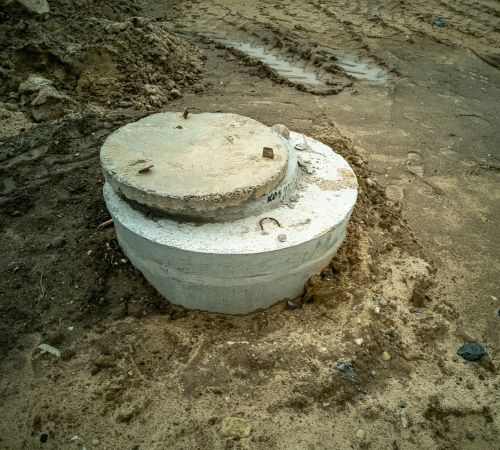Home » Knowledge base » How much does it cost to empty a septic tank in the UK?
How Much Does It Cost to Empty a Septic Tank in the UK?
For millions of homeowners across the United Kingdom, septic tanks are an essential part of their property’s waste management system. While these underground workhorses go about their rather unsavoury business—day in and day out, silently and without much fuss or fanfare—they do require some TLC from time to time, most notably emptying. One of the most common questions from homeowners is, “How much does it cost to empty septic tank systems?” This comprehensive guide will focus on what dictates septic tank emptying prices in the UK, how to manage these expenses effectively, and some tips on keeping your septic system running for optimal performance and cost-efficiency.
Basic Septic Tank Systems
Before discussing the costs, let’s first understand how a septic system works. This type of system operates below your premises, with home waste passing through concrete, fiberglass, or plastic for basic treatment in the tank. An average system is composed primarily of two elements:
Components of a Septic System
- The Septic Tank: Where solids sink and scum floats.
- The Drainage Field: Where the pre-treated wastewater goes after filtration in the soil.
Layers in a Septic Tank
As wastewater enters, it naturally divides into three layers:
- Scum (top layer): Oils and greases rise to the top.
- Effluent (mid-layer): Relatively clear water.
- Sludge (bottom layer): Solids heavier than water that settle at the bottom.
Over time, the sludge and scum layers accumulate, filling up the tank. As a result, septic tank systems require frequent emptying.

Factors That Determine the Price of Septic Tank Emptying
Several factors influence the cost of septic tank emptying in the UK. Understanding these aspects can help you estimate and prepare for this maintenance cost.
Influencing Factors
- Tank Size: Larger tanks require more waste removal and disposal, thus costing more to empty.
- Location: Costs may be higher for rural areas due to travel expenses and in urban areas due to higher service charges.
- Accessibility: Difficult-to-access tanks or those buried deeply require special equipment, increasing the cost.
- Frequency of Service: Regular servicing can reduce overall costs, with some providers offering discounts for scheduled services.
- Local Rates and Competition: Local market rates and competition among providers can significantly influence the cost.
Extra Services: Additional services like inspections or minor repairs can increase upfront costs but may save money in the long run.

Average Costs of Septic Tank Emptying in the UK
While prices can vary, here are some estimated costs for budgeting:
- Small tanks (up to 2,700 litres): £150 to £300
- Medium tanks (2,700 to 4,000 litres): £200 to £400
- Large tanks (4,000 to 9,000 litres): £300 to £600
How Often Are Septic Tanks Emptied?
The frequency of septic tank emptying depends on several factors:
Potential Factors
- Size of Household
- Amount of Water Used
- Size of Tank
- Type of Waste Introduced
Experts recommend emptying a septic tank every 1 to 2 years in the UK. Some tanks may need more frequent emptying, while others can go longer.
Signs Your Tank Needs Emptying
- Slow-draining fixtures
- Gurgling sounds in pipes
- Sewage odours at drains or in the garden
- Wet spots or standing water in the drainage field
- Sewage backups in the house
- Lush green growth above the drainage field
How a Septic Tank is Emptied
Understanding the process can help appreciate the cost:
Process Overview
- Locating the Tank: The service provider finds the septic tank.
- Inspection: A preliminary inspection for visible problems.
- Pumping: Pumping out the contents using a large hose on a pump truck.
- Rinse: Cleaning the interior with water jets if needed.
- Final Inspection: Checking for cracks, leaks, or damage.
- Re-fill: Leaving a little water to recreate the necessary bacteria for treatment.

Reasons to Seek Professional Emptying
- Health and Safety Hazards: Handling hazardous bacteria and gases requires proper safety gear and knowledge.
- Proper Disposal: Sludge must be disposed of at authorized facilities.
- Potential for Damage: Incorrect handling can damage the system, leading to costly repairs.
- Insufficient Equipment: Professional services use large, heavy pumping trucks and equipment.
Legal Compliance: Professionals are aware of UK regulations regarding septic tank maintenance and waste disposal.
How Emptying Frequency and Costs Can Be Reduced
Tips for Reducing Frequency and Costs
- Water Conservation: Use water-efficient appliances and fix leaks.
- Use Septic-Safe Products: Avoid harsh chemicals that kill beneficial bacteria.
- Do Not Flush Non-Biodegradable Items: Only flush human waste and toilet paper.
- Regular Checkups: Have your system checked annually to identify problems early.
- Consider Bacterial Additives: Consult a septic professional before using additives.
Separate Rainwater Runoff: Keep non-wastewater drainage separate from the septic system.
Recommended Products for your Septic Tank
-
DWT-Septic Plus – Septic Tank Bacteria – 1kg
Cesspool Bacteria Treatment £57.45 £47.88 (excl. VAT) Add to basket -
Septic Tank Bacteria Booster | Concentrated Formula
Septic tank bacteria £51.45 £42.88 (excl. VAT) Add to cart -
Roebic K37 Septic Tank Treatment | Concentrated Formula
Septic tank bacteria £27.95 £23.29 (excl. VAT) Add to basket -
DWT-Septic – Septic Tank Additives – 1kg
Cesspool Bacteria Treatment £46.95 £39.13 (excl. VAT) Add to basket





